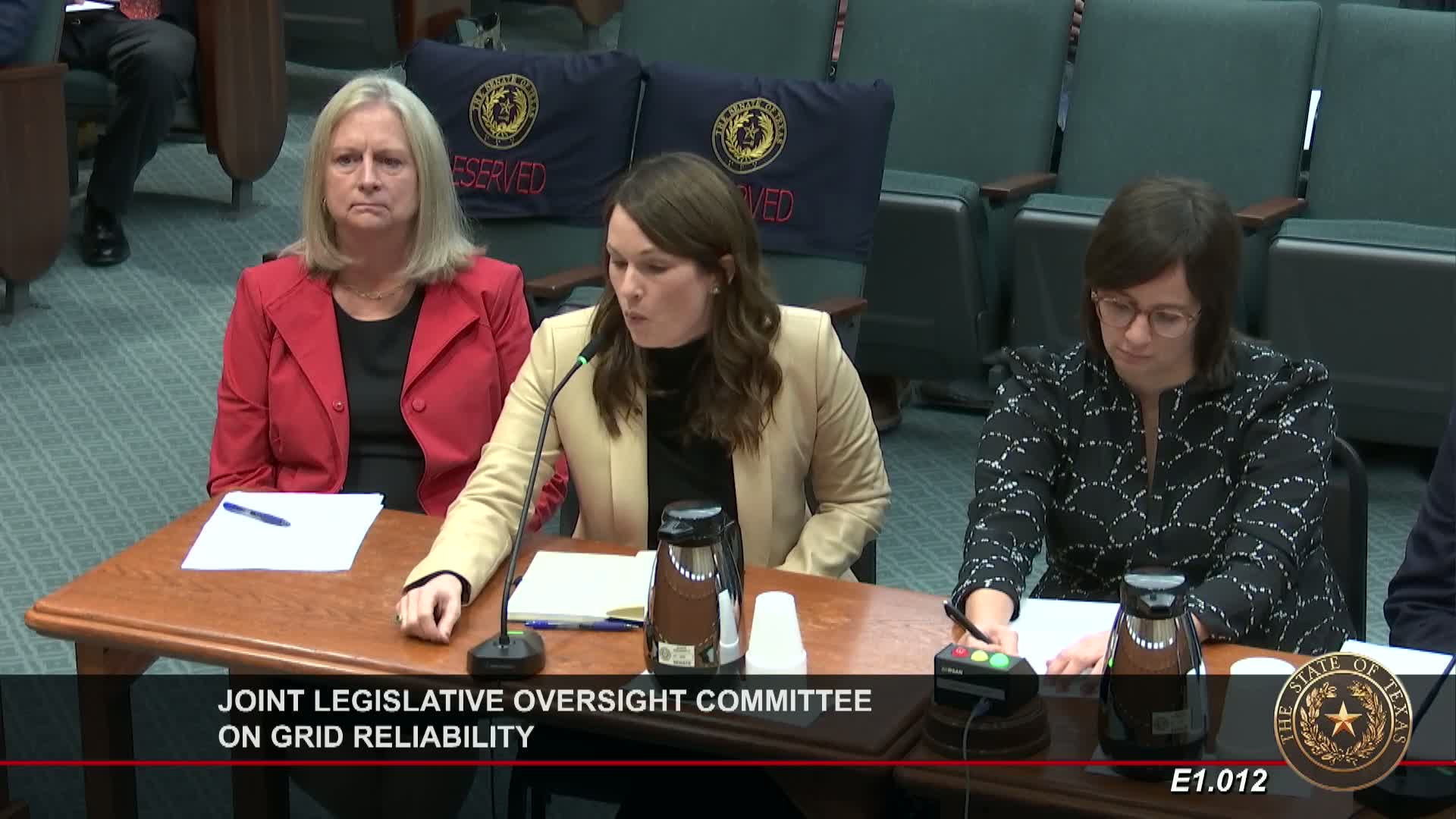Texas Utilities Seek Clarity Amid Surge in Data Center Demand
December 03, 2024 | Select, Interim, and Joint Committees, Senate, Legislative, Texas
This article was created by AI summarizing key points discussed. AI makes mistakes, so for full details and context, please refer to the video of the full meeting. Please report any errors so we can fix them. Report an error »

During a recent government meeting, officials discussed significant concerns regarding the growing load issues in Texas, particularly related to data center development. The discussions highlighted the potential risks to traditional industrial development and the overall business climate if these issues are not addressed effectively.
One key point raised was the discrepancy between national projections for data center growth and the numbers reported for the Electric Reliability Council of Texas (ERCOT). A McKinsey report predicts that the U.S. will see 30 to 35 gigawatts of data center development by 2030, which does not align with ERCOT's current figures. Officials emphasized the need for further scrutiny of these numbers to understand the underlying reasons for this gap.
The meeting also touched on the importance of distinguishing between transmission planning and generation adequacy. Officials explained that transmission planning must account for maximum capacity, similar to building a bridge that can handle peak traffic, while generation adequacy includes a reserve margin for unexpected conditions. This distinction is crucial for effective planning and resource allocation.
Cost allocation for transmission investments was another major topic. There was a consensus that the current methodology may not accurately reflect the causes of increased transmission needs. Officials expressed openness to exploring new methods that consider broader definitions of peak demand and the impact of seasonal variations.
Additionally, the concept of colocation was discussed, particularly in relation to data centers. While there are concerns about the implications of colocation, officials noted that historically, industrial customers have used on-site generation to enhance reliability and reduce costs. They argued that supporting such developments could actually benefit resource adequacy.
Julia Harvey, representing Texas Electric Cooperatives, emphasized the importance of affordability and the need to protect residential users from rising costs associated with new infrastructure. She pointed out the risks of cost shifting that could arise from accommodating large loads, especially those that can quickly adjust their consumption patterns.
Overall, the meeting underscored the need for careful planning and analysis to ensure that Texas can meet its growing energy demands while maintaining a fair and sustainable cost structure for all users.
One key point raised was the discrepancy between national projections for data center growth and the numbers reported for the Electric Reliability Council of Texas (ERCOT). A McKinsey report predicts that the U.S. will see 30 to 35 gigawatts of data center development by 2030, which does not align with ERCOT's current figures. Officials emphasized the need for further scrutiny of these numbers to understand the underlying reasons for this gap.
The meeting also touched on the importance of distinguishing between transmission planning and generation adequacy. Officials explained that transmission planning must account for maximum capacity, similar to building a bridge that can handle peak traffic, while generation adequacy includes a reserve margin for unexpected conditions. This distinction is crucial for effective planning and resource allocation.
Cost allocation for transmission investments was another major topic. There was a consensus that the current methodology may not accurately reflect the causes of increased transmission needs. Officials expressed openness to exploring new methods that consider broader definitions of peak demand and the impact of seasonal variations.
Additionally, the concept of colocation was discussed, particularly in relation to data centers. While there are concerns about the implications of colocation, officials noted that historically, industrial customers have used on-site generation to enhance reliability and reduce costs. They argued that supporting such developments could actually benefit resource adequacy.
Julia Harvey, representing Texas Electric Cooperatives, emphasized the importance of affordability and the need to protect residential users from rising costs associated with new infrastructure. She pointed out the risks of cost shifting that could arise from accommodating large loads, especially those that can quickly adjust their consumption patterns.
Overall, the meeting underscored the need for careful planning and analysis to ensure that Texas can meet its growing energy demands while maintaining a fair and sustainable cost structure for all users.
View full meeting
This article is based on a recent meeting—watch the full video and explore the complete transcript for deeper insights into the discussion.
View full meeting
